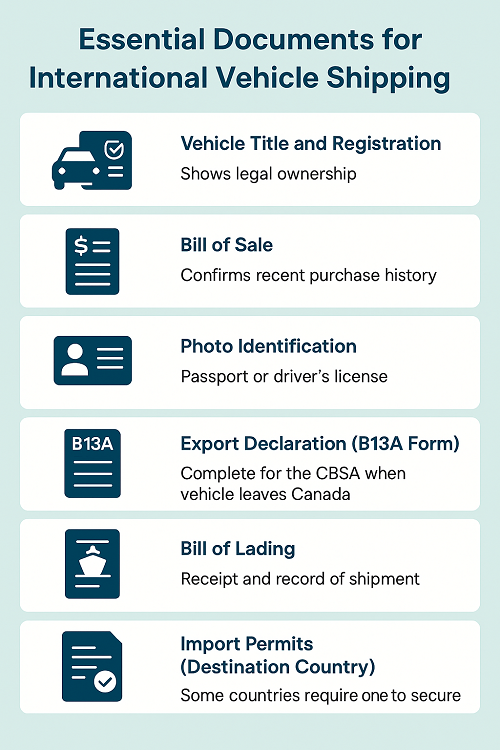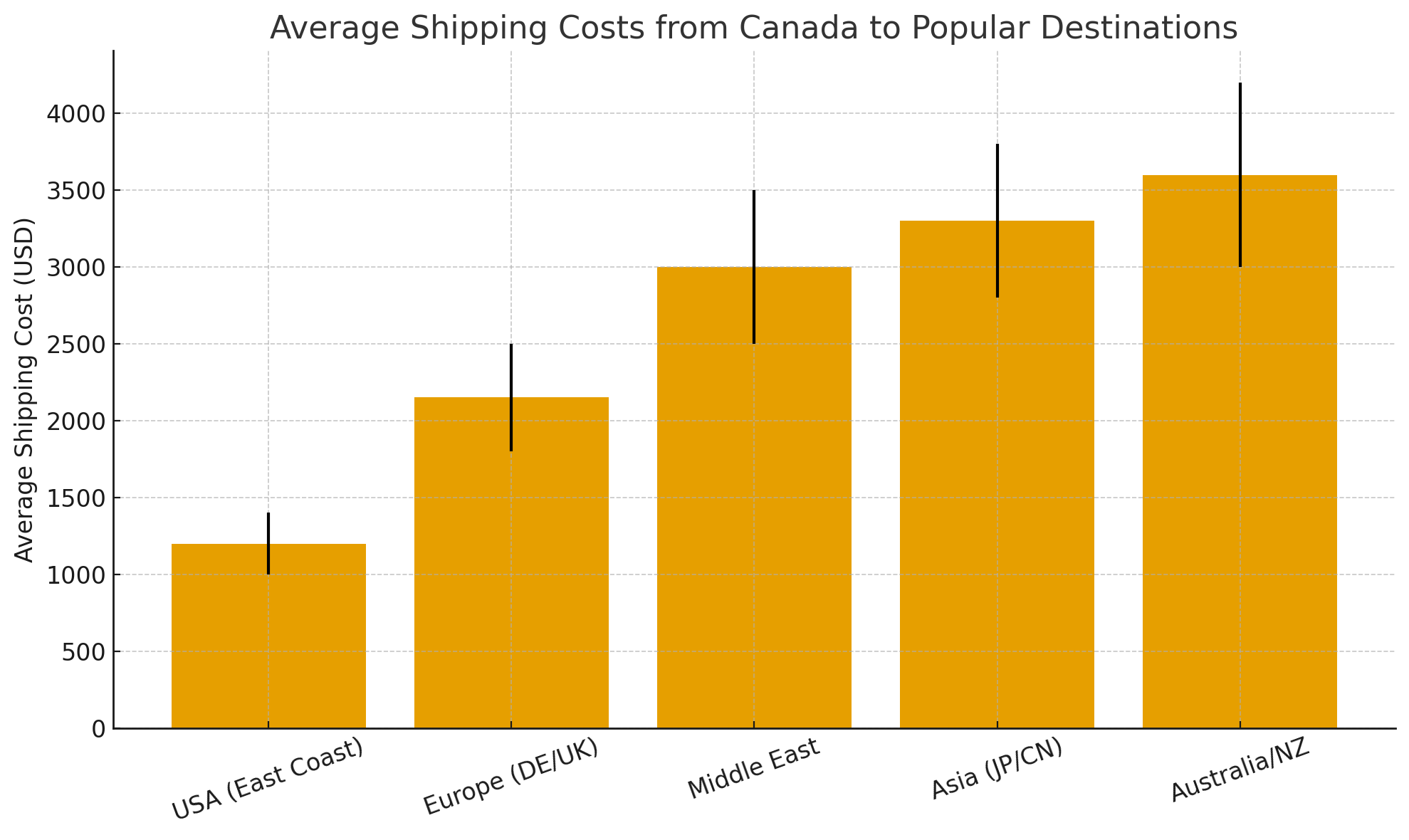
Shipping a Vehicle from Canada to Foreign Countries: The Complete Guide
Shipping a Vehicle from Canada to Foreign is an important service for Canadian car owners, expatriates, and businesses looking to ship a vehicle when moving abroad, sell a vehicle abroad, or expand out of their local dealership market. Professional international auto shipping services handle all of the logistics, customs, and international regulations during the shipping of a vehicle across borders, making the process simple for the customer.
Documenting, performing customs procedures, and transporting a shipment in a container or via RoRo must comply with international shipping protocols, in line with the regulations of the destination country.
Good planning using able experts can get your car delivered safe, on time and intact anywhere in the world.
Table of Contents
Understanding International Vehicle Shipping from Canada
International auto shipping in Canada may be by sea freight, air freight, or overland transport. Although most international auto transport is by sea, which mode to choose depends on various factors.
Exporting vehicles requires compliance with regulations promulgated by the Government of Canada, specifically the Canada Border Services Agency (CBSA), as well as those of the destination country, and is performed by regulated international shipping companies.
| Shipping Method | Average Cost (USD) | Protection Level | Ideal For | Transit Time |
|---|---|---|---|---|
| Container Shipping | 1,800–3,000 | High | Luxury or classic cars | 4–8 weeks |
| Roll-on/Roll-off (RoRo) | 1,200–1,800 | Moderate | Standard vehicles | 5–9 weeks |
| Air Freight | 5,000–10,000 | Very High | Urgent or exotic cars | 1–2 weeks |
| Land Transport (Cross-Border) | 900–1,400 | Moderate | U.S. destinations | 5–7 days |
RoRo is usually the cheapest option whilst container shipping offers the best vehicle protection (especially for expensive/classic vehicles), air freight is the fastest but costs the most.
Documentation and Customs Requirements
Exporting a vehicle from Canada may require additional export and import documents required by the customs and border services of both the Canadian and foreign destination.
Essential Documents for International Vehicle Shipping
- Vehicle Title and Registration: show legal ownership.
- Bill of Sale: It confirms the item’s recent purchase history.
- Photo Identification: passport toward driver’s license.
- Export Declaration also known as B13A Form: Complete it for the CBSA when the vehicle leaves Canada.
- Bill of Lading: Issued by the carrier as a receipt and record for shipment.
- Import Permits (Destination Country): Some countries require one to secure import permits for a vehicle’s destination.
Customs Clearance Process
- Export Submission: All documents are submitted to the CBSA for verification.
- Vehicle Inspection: Inspect VIN and vehicle condition for compliance.
- Carrier Loading: The vehicle is loaded inside a container or RoRo vessel.
- Arrival at destination: documents are checked there, duties are assessed there, and the vehicle is released there.
Professional shipping agents typically handle this paperwork. This prevents delays. This ensures compliance.
Comparing Destinations and Average Costs
Shipping rates will vary according to the destination, shipping method, and port facilities within. Below is a list along with rates to major international destinations.

- Shipping to the USA on the East Coast, for the cheapest option, will cost from $1000 to $1400.
- Shipping toward Europe typically costs $1,800 or $2,500.
- Prices within the Middle East region are often higher and go from $2,500 to $3,500.
- Shipping to Asia specifically Japan or China costs from $2800 to $3800 usually.
- Australia/New Zealand has the highest rate in $3,000 to $4,200.
Because of the possibility of land freight, short distances such as shipping to the U.S. are less expensive than Europe or Asia, at which port tariffs and fuel prices increase costs.
A main shipping hub choice such as Vancouver, Montreal, or Halifax might reduce total cost and shipment transit time from that hub regularly.
How to Prepare for Shipping a Vehicle from Canada to Foreign Destinations
Your vehicle will ship without issues and arrive in perfect condition through proper preparation. Here are the steps for you to take before shipping:
Step-by-Step Preparation
Wash the vehicle and document pre-existing damage for cleaning and inspection.
- Remove Personal Belongings: Customs regulations permit no personal items inside the car.
- Check Fluids and Battery: Check the vehicle fluids plus ensure the battery charge.
Toll Tags and Alarms must be disabled for the trip to avoid a charge or to keep alarms from triggering when going through toll gates.
Choosing the Right Shipping Company
You can sleep well with a carrier you can trust.
- International routes: Businesses with experience dealing with customs forms and foreign regulations.
- Insurance Coverage: Protection from various risks during transportation.
- Pricing is transparent: Detailed estimates have no hidden fees.
- Tracking Systems: Track the vehicle’s shipment status in real-time.
Having professionals in your corner can help ensure the logistics, customs, and delivery of your orders.
Simplifying Shipping from Canada to Foreign Destinations
Sending a car from Canada to another country can be very simple, although it may seem complicated. With a bit of help from someone, and time spent getting used to the paperwork involved, and customs and shipping details, you will have your car sent quickly and safely.
International auto transport companies can complete all necessary paperwork. They can handle the logistics and regulations for sending a car overseas. RoRo, containerized shipping, and air freight are the most common ways for shipping items timing and budget determine the choice.
When you carefully plan and work with trusted carriers, you can secure your export when it departs and arrives.
